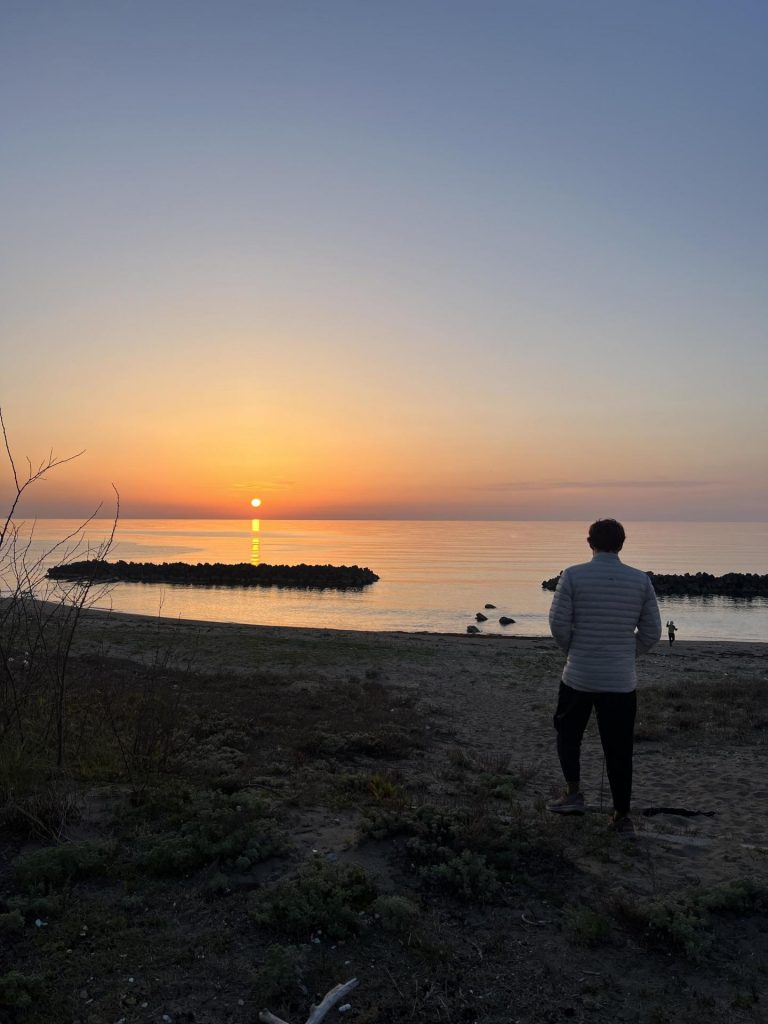Japan is famous for its super fast bullet trains, where cities and the countryside blur into one—the final destination, hundreds of kilometers away, reached in mere hours. Yet, for a more meandering journey, head to Niigata for some of Japan’s finest sake and intoxicating views. It’s the perfect pairing on Niigata’s Sake Train.
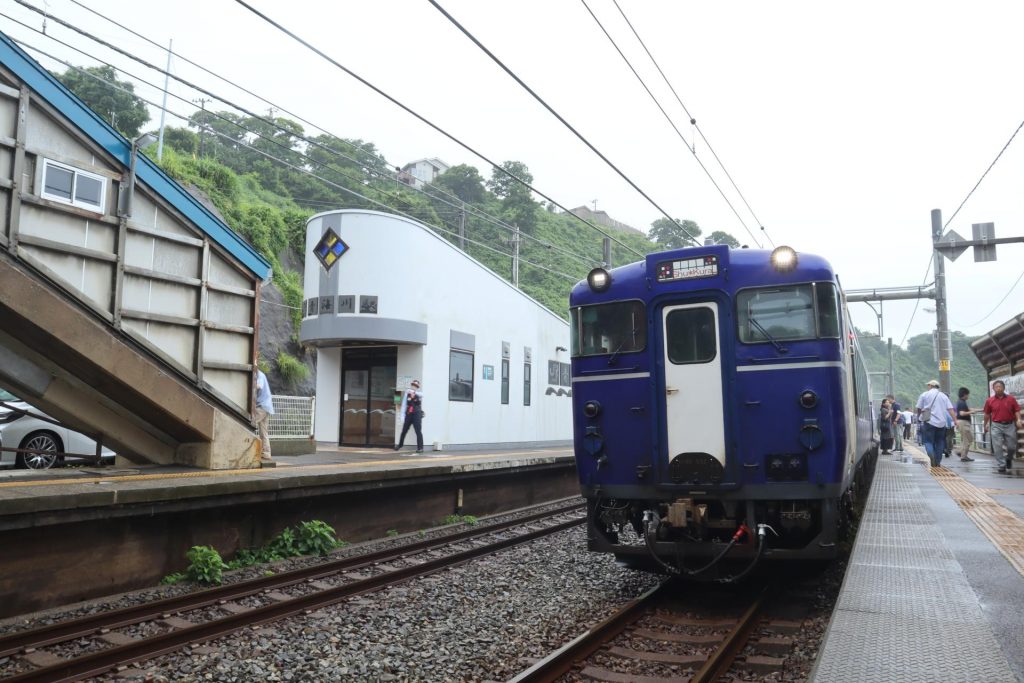
The Koshino Shu*Kura is a three-hour sightseeing train where you get to taste Niigata sake (Japanese rice wine), also known as nihonshu, and enjoy a meal made of locally sourced ingredients. This sake train is one of JR East’s special “joyful” trains. There are 44 throughout Japan and each focuses on a speciality of that region.
Niigata is particularly famous for its sake. This is in part due to the “snow country’s’” ideal rice production environment. Niigata is home to pure water and is Japan’s largest producer of rice. Rice and water being the two essential ingredients for making great sake, it’s no surprise Niigata produces excellent nihonshu.
The train’s route takes you along the coastline, oft blasted by wintry Siberian winds, and across inland plains where you can view the seasons through the shades of rice production, with the Japanese Alps guarding the horizon.
Depending on what time of the year you take the sake train, the scenery outside will change. In autumn, gold and bronze hues will color your travels and you may even catch a glimpse of white blanketing the highest points of the mountainous landscape. I boarded the Koshino Shu*Kura on a humid June day during Japan’s rainy season, a gray drizzle blurring the line between sky and moody sea.
There are three routes to choose from on the sake train. There is the traditional route between Joetsu-Myoko and Tokamachi stations, or you can disembark at the winter resort town of Yuzawa or further down the line in Niigata City.
I boarded near my local station in Naoetsu along the route in Joetsu City. Passing through the three carriages of the 1970s train, I notice one is set out in a traditional seating arrangement where fellow sake-lovers chat and mingle. The middle carriage is open and a couple of jazz musicians serenade you as you take part in a sake tasting at standing tables.
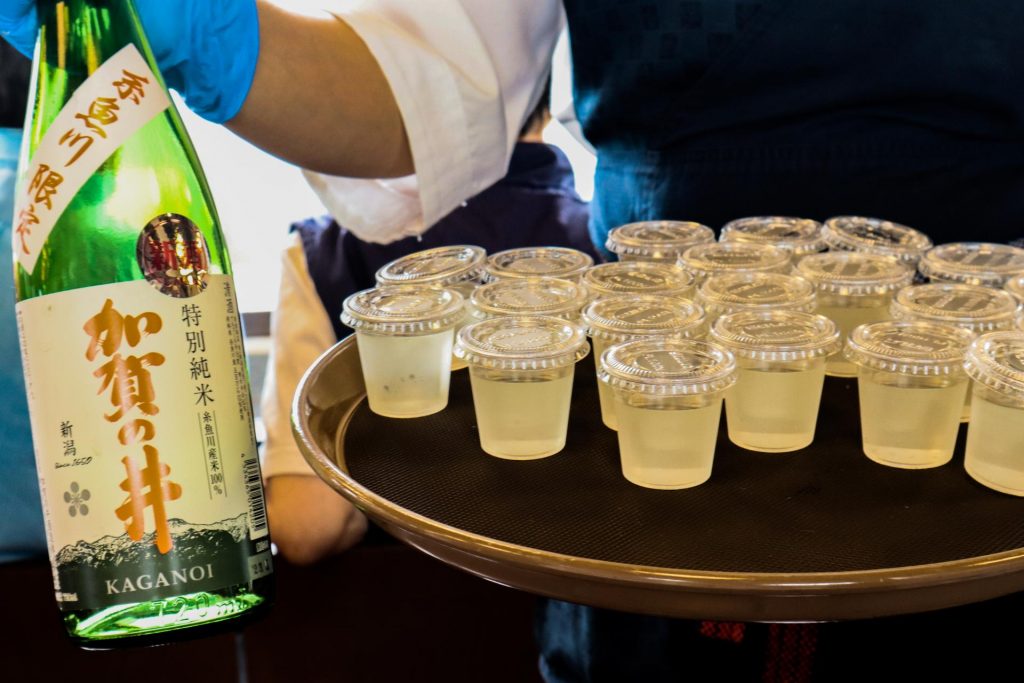
The final carriage is where you spend most of your journey. The elaborately decorated carriage features interiors are specifically designed to maximize your experience. Seats face towards the passing view, framed with extra wide windows. I take my seat in this grand stand arrangement as the Sea of Japan fills the window in front of me.
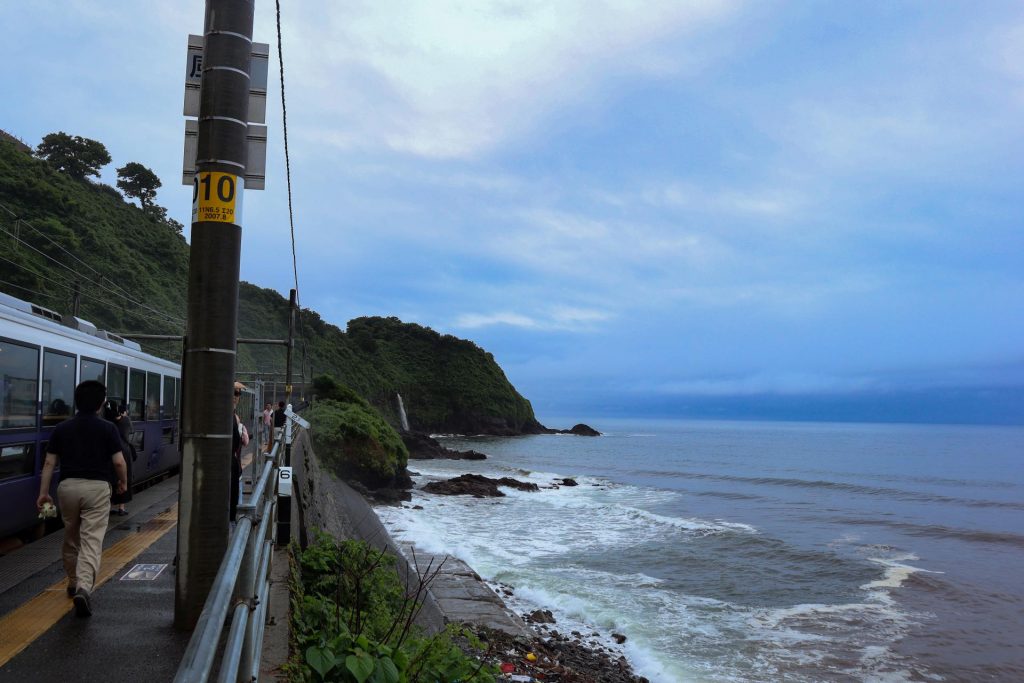
There are more than 90 licensed sake breweries in Niigata and a changing selection of sake will be served to you along the journey. My first sake sip was of a sparkling variety called Black Firework from Nagaoka-based Hakuro; it was light and delightful setting the vibe for the journey to come.
A bento-style meal accompanies the sake tasting. This also changes depending on seasonal produce and local delicacies. Imagine eggplant tempura, steamed chicken pieces, broiled salmon and mochi to finish, all with a generous serving of dry, still sake to wash it down.
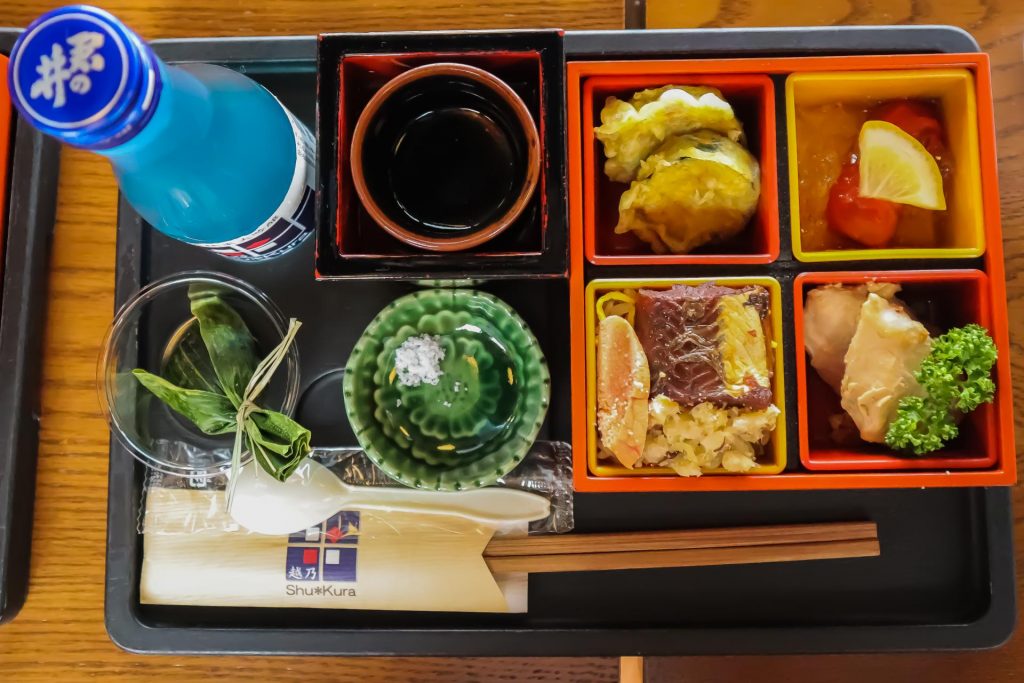
Just under an hour into the journey, the train stops at a scenic viewpoint along the coast. I sip on my fourth cup of sake, this one from Kaganoi Sake, and wander out to snap a photo of the white-capped sea.
A chilled daiginjo, brewed by century-old Kimino Shuzou Brewery exclusively for the sake train awaits as I return to the carriage. The train curves around the valleys of the Hida and Echigo mountains. Knowledgeable attendants proudly show you each sake bottle before pouring, ensuring photos can be taken and curious questions answered before sipping.
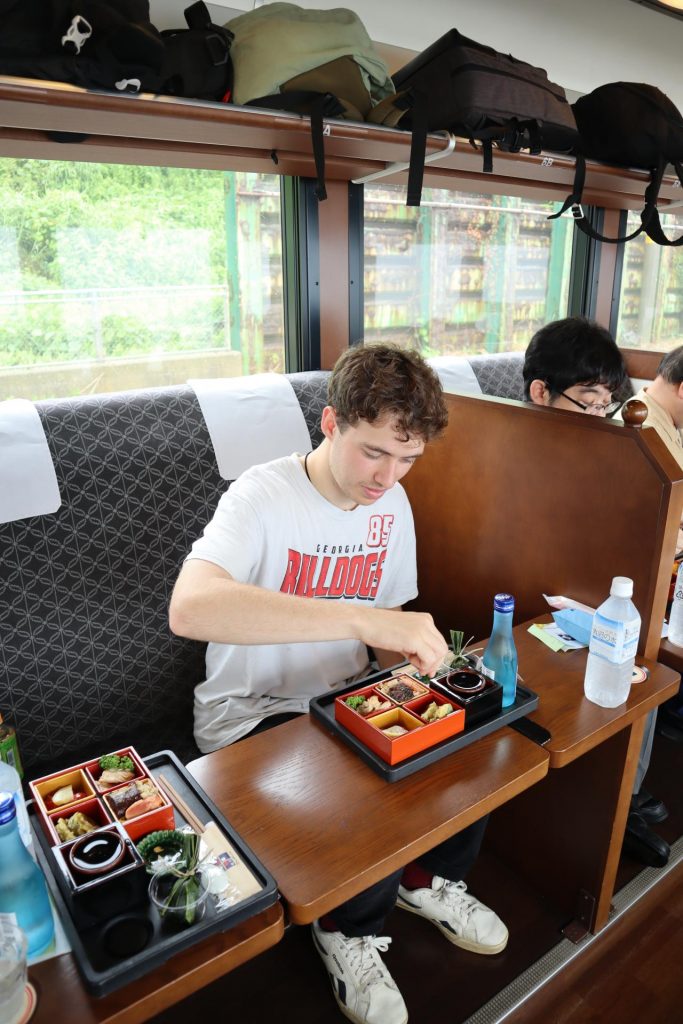
Bright green foothills, golden tambo (rice fields) and a soft buzz within herald the end of the line. A train journey is usually about simply getting from point A to B. But the sake train adds the views—and tastes—of Niigata, and there is something special about tasting the local tipple while looking out upon the rice used to make it.
Essential Info
Tickets and When to Go
For about ¥8,000 you can reserve a seat in the rear car. This includes a light meal, a ticket to disembark at any station along the journey and sake to taste. The journey takes two-and-a-half to three hours depending on which station you embark and disembark from.
The sake train is covered by JR Pass and a variety of other JR East regional passes but onboard drinks and food must be bought additionally. Seat reservations are recommended to be made at least three days in advance on weekdays and at least 10 days during weekends and public holidays. Reservations can be made online or at any JR ticket window in person. The train runs from spring until late autumn.
For those traveling from Tokyo, take the Hokuriku Shinkansen to Joetsu-Myoko Station and board the sake train. You can then stay in Niigata City, which offers an array of accommodation to suit varying budgets.
Web Connection
Sado Island Side Trip
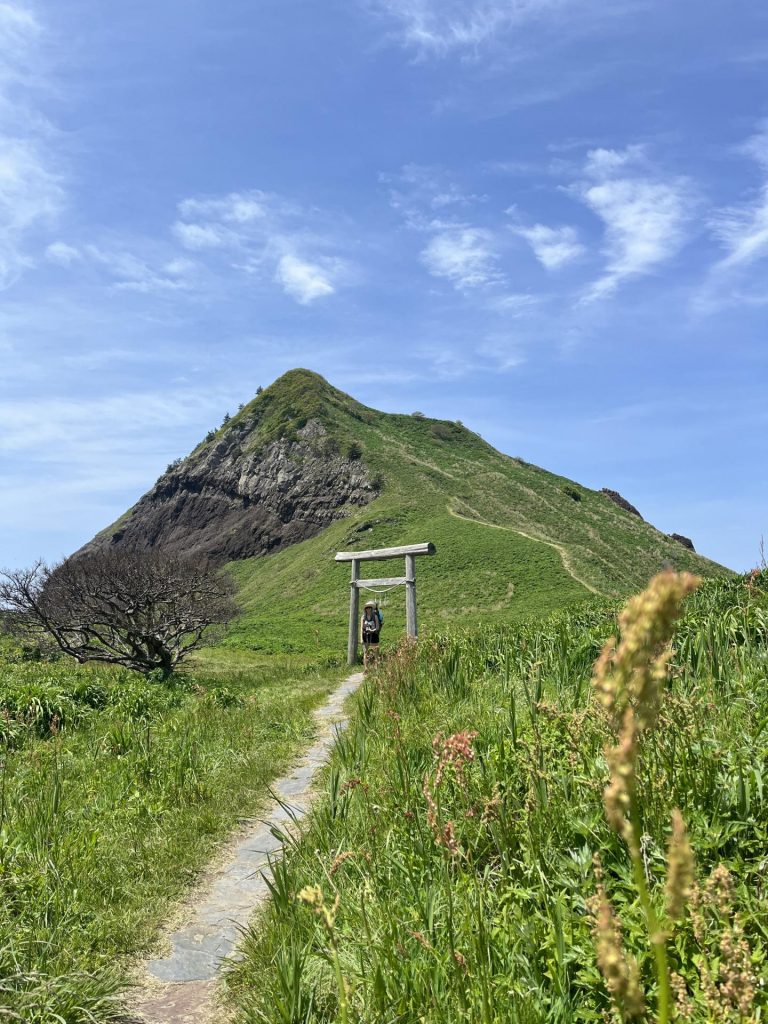
Sado Island lies off the coast of Niigata Prefecture in the Sea of Japan. It’s a land of gold mines, blooming wildflowers and booming sounds of taiko drums. Japan’s fifth-largest island has 280 kilometers of coastline with sandy beaches and towering cliffs. It is also home of Kodo, Japan’s most famous taiko group, and their annual Earth Celebration.
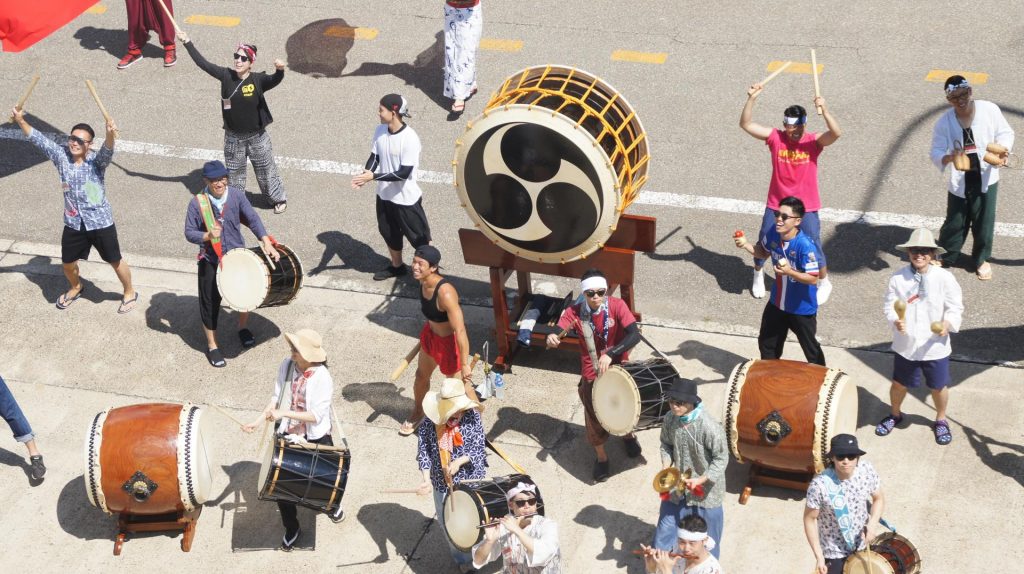
My partner and I decided to hitchhike around Sado Island’s stunning coastline, camping at beachside locations where we watched the sun dip into the horizon’s arms every evening. It was never a problem to get from one location to the next, as both locals and other islanders alike were all eager to help me out. One kind visitor, a university lecturer from Nagoya, visiting the island for the first time himself, drove us two hours up the coast to the island’s northern tip, where a vista of golden yellow Tobishima day lilies carpeted the cliffs.
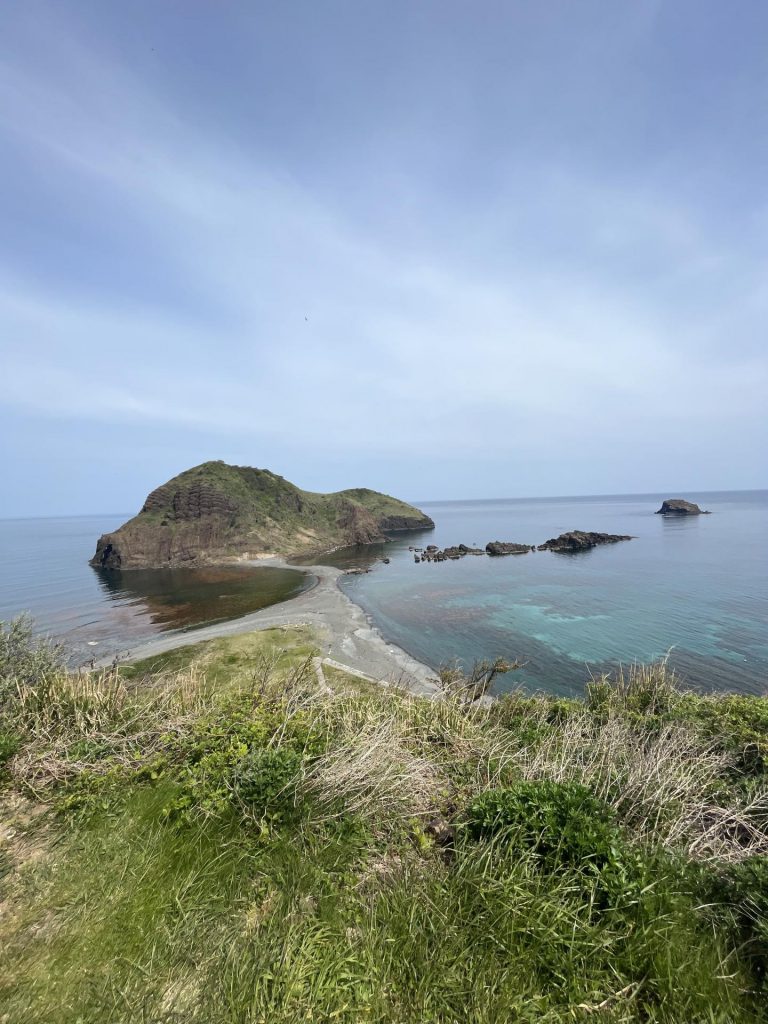
On day two of the journey we visited Tatatokan and experienced the mighty power of taiko firsthand. I stood in awe watching the Kodo ensemble perform just days later at the Earth Celebration, remembering the strength needed to pound out the booming rhythmic music. The best part of the Earth Celebration was seeing the glee of people of all ages, cultures and genders as they got to take bachi in hand and try out the ancient musical art form.
Sado’s lush scenery was the perfect backdrop for the celebration. The sun lit up each stage, while a gentle sea breeze kept everyone cool. Ogi Town hosts the big concert each night and other smaller events and performances happen throughout the weekend. We loved the impromptu performances, where locals and festival goers participated in jam sessions led by Kodo, weaving different cultural musical expressions together.
The first Earth Celebration was held in 1988 as “an experiment in strengthening the community ties of all earth’s inhabitants” through art and music. An estimated 23,000 people from around the world gathered on the island to enjoy the event in August this year.
You can take a car (or bike) on the ferry from either Naoetsu Port in Joetsu to Ogi, or from Niigata City to Ryotsu further north. Sado has a series of well-connected bus routes as well along with camping spots, hostels and ryokan to stay.
